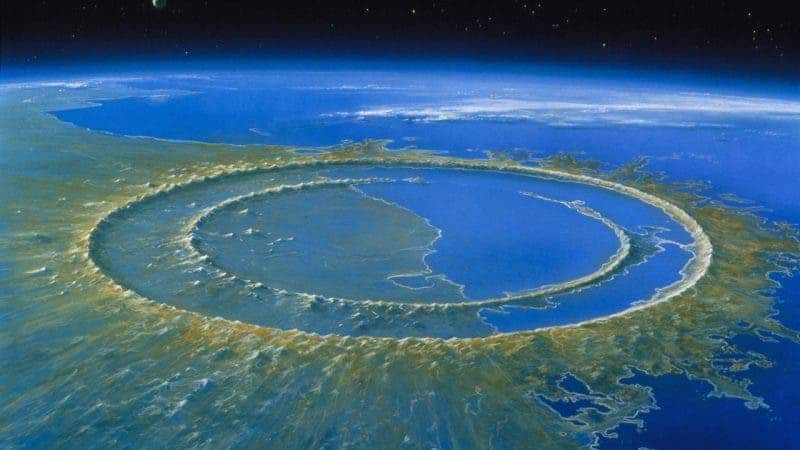
Around 66 million years ago, a giant asteroid struck our planet off the coast of Mexico. The devastating impact, whose force was equivalent to 10 billion Hiroshima A-bombs, unleashed huge tsunamis hundreds of feet tall, global wildfires, and sent molten rock hurtling all the way to the moon. About 75% of all life on Earth was killed almost instantly, including all non-avian dinosaurs. But according to a controversial Harvard astronomer, the culprit wasn’t an asteroid, but rather a comet fragment from the outer reaches of the solar system.
Since geophysicists first identified the huge impact crater in Chicxulub, Mexico, the site has been the subject of important research probing into the nature of the impactor in order to reconstruct the devastating timeline of the mass extinction that would follow.
We now know, for instance, that the impactor must have been very large, measuring between 10 and 80 kilometers in diameter, judging from the staggering 180-kilometer-wide crater, most of which is submerged in the Pacific Ocean. The impact then shrouded the planet into a decades-long winter, which decimated the suitable environments for dinosaurs.
This leading theory is that this impact arrived from the asteroid belt between Mars and Jupiter, but Harvard’s Professor Avi Loeb and astrophysics graduate student Amir Siraj have published a new study proposing an alternative source.
Loeb is no stranger to controversial theories. Previously, he claimed that the first-ever interstellar object Oumuamua may actually be an alien spaceship. He’s actually being a lot more conservative with his most recent paper published Monday in the journal Scientific Reports.
The pair of researchers performed the statistical analysis and gravitational simulations to essentially reverse-engineer the path the Chicxulub impactor took, showing that the impact actually originated from the Oort cloud — a shell of icy objects that exist in the outermost reaches of the solar system, more than a trillion miles away from Earth.
The Oort cloud is where most of the comets in the solar system are flung from. However, the Chicxulub impact wasn’t produced by a comet, but rather by comet fragments.
According to the researchers’ simulations, many Earth-crossing events were also directly preceded by very close encounters with the Sun. Astronomers call these comets “sun-grazers”.
Due to the gravitational interactions with the Jupiter-Sun system, large comets are torn apart into a large number of smaller fragments. Since the number of fragments large enough to account for the Chicxulub crater was about an order of magnitude greater than the background asteroid or comet population, the researchers simply conclude that it was far more likely that the crater was produced by a comet fragment.
“The solar system acts as a kind of pinball machine,” Siraj said. “Jupiter, the most massive planet, kicks incoming long-period comets into orbits that bring them very close to the sun.”
“And crucially, on the journey back to the Oort cloud, there’s an enhanced probability that one of these fragments hit the Earth,” the scientist added.
The comet fragment hypothesis may explain the unusual composition of the Chicxulub crater, which suggests the impactor was made of carbonaceous chondrite. These minerals are rare amongst main-belt asteroids, but rather widespread among long-period comets that make rounds between the sun and the Oort cloud.
A similar mineral composition was also encountered at the 2-billion-year-old Vredefort crater in South Africa, which is the largest confirmed crater in Earth’s geological history, as well as the Zhamanshin crater in Kazakhstan, which is the largest confirmed crater within the last million years. This is why the researchers plan to use the same approach on these craters as well.
These insights may be important in the future as the new Vera Rubin Observatory in Chile is scheduled to come online next year. The observatory can measure both the composition and tidal disruption of long-period comets, so it should be able to provide data that may confirm the researchers’ model.
“We should see smaller fragments coming to Earth more frequently from the Oort cloud,” Loeb says. “I hope that we can test the theory by having more data on long-period comets, get better statistics, and perhaps see evidence for some fragments.”
Ultimately, these investigations may be crucial in our efforts to mitigate catastrophic cosmic impacts and avoid the same fate as the dinosaurs.
“It must have been an amazing sight, but we don’t want to see that again,” Loeb said.






